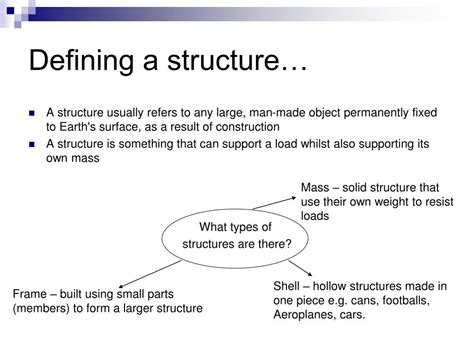How to break through strength plateaus for consistent peak male performance?

Every dedicated male lifter eventually encounters the dreaded strength plateau – that frustrating point where progress stalls despite consistent effort. It’s a natural part of the fitness journey, but it doesn’t have to be a permanent roadblock. Breaking through these barriers is crucial for continuous muscle gain, improved strength, and achieving consistent peak performance. This article will delve into effective strategies to reignite your progress and push past those stubborn plateaus.
Understanding the Strength Plateau
Plateaus aren’t a sign of failure; they’re an indicator that your body has adapted to your current training stimulus. Physiologically, your muscles, nervous system, and connective tissues become accustomed to the demands placed upon them. To continue progressing, you must introduce a new challenge. Common reasons for plateaus include:
- Lack of Progressive Overload: Not consistently increasing the demand on your muscles.
- Inadequate Recovery: Insufficient sleep, active recovery, or stress management preventing muscle repair and growth.
- Nutritional Deficiencies: Not consuming enough calories, protein, or micronutrients to support intense training and muscle building.
- Overtraining: Pushing too hard for too long without sufficient rest, leading to fatigue and diminished performance.
- Monotony: Repeating the same workouts with no variation, leading to adaptation without further stimulus.

Strategic Training Modifications
The core of breaking a plateau lies in intelligently manipulating your training variables.
Varying Progressive Overload
Progressive overload isn’t just about adding more weight. Consider these variations:
- Increase Reps or Sets: If you’re stuck at a certain weight for 5 reps, try to hit 6 or 7 reps, or add an extra set.
- Decrease Rest Times: Shortening the rest period between sets increases intensity and metabolic demand.
- Increase Time Under Tension (TUT): Slow down the eccentric (lowering) phase of an exercise to increase muscle activation and fatigue.
- Improve Form: Sometimes a plateau is due to compromised form. Master the movement to recruit target muscles more effectively.
- Increase Frequency: If you’re hitting a muscle group once a week, consider twice a week (with adequate recovery).
Implementing Periodization and Deloads
Periodization involves structuring your training into different phases, each with a specific goal (e.g., strength, hypertrophy, endurance). This prevents adaptation and keeps your body guessing. Examples include:
- Linear Periodization: Gradually increasing intensity (weight) while decreasing volume (reps/sets) over time.
- Undulating Periodization: Varying intensity and volume on a daily or weekly basis (e.g., heavy day, moderate day, light day).
Deloads are critical. A deload week, typically every 4-8 weeks, involves significantly reducing your training volume and/or intensity (e.g., 50-60% of your usual weight/reps). This allows your body to fully recover, repair tissues, and come back stronger. It’s not a sign of weakness; it’s a strategic move for long-term progress.

Introducing New Exercises and Techniques
Swap out exercises that have stalled. If your barbell bench press is stuck, try dumbbell presses, incline presses, or dips. Incorporate advanced techniques like:
- Drop Sets: Perform a set to failure, then immediately drop the weight and continue for more reps.
- Supersets/Giant Sets: Perform two or more exercises back-to-back with no rest.
- Partial Reps: Work through the strongest range of motion to handle heavier loads.
- Negatives: Focus solely on the eccentric portion of a lift with a heavier-than-normal weight.
Optimizing Nutrition for Gains
Your diet is just as important as your training. To break through a plateau, you likely need to re-evaluate your caloric and macronutrient intake.
- Caloric Surplus: To build muscle and strength, you generally need to be in a slight caloric surplus. Ensure you’re eating enough to fuel intense workouts and facilitate recovery.
- Adequate Protein: Aim for 1.6-2.2 grams of protein per kilogram of body weight to support muscle repair and synthesis.
- Complex Carbohydrates: These are your primary energy source for high-intensity training. Prioritize whole grains, fruits, and vegetables.
- Healthy Fats: Essential for hormone production and overall health. Include sources like avocados, nuts, seeds, and olive oil.
- Hydration: Dehydration can severely impact strength and endurance. Drink plenty of water throughout the day.

The Critical Role of Recovery
Training breaks down muscle; recovery builds it back stronger. This is often the most overlooked aspect of plateau busting.
- Sleep: Aim for 7-9 hours of quality sleep per night. This is when your body produces growth hormone and repairs tissues.
- Active Recovery: Light activities like walking, stretching, or foam rolling can improve blood flow and aid recovery without adding stress.
- Stress Management: Chronic stress elevates cortisol, which can hinder muscle growth and recovery. Incorporate stress-reducing activities like meditation, yoga, or spending time in nature.
- Listen to Your Body: Don’t be afraid to take an extra rest day if you feel overly fatigued or sore. Pushing through constant fatigue is a recipe for overtraining.

Mindset: The Unseen Muscle
Your mental approach plays a significant role in overcoming plateaus.
- Patience and Consistency: Progress isn’t linear. Be patient with yourself and remain consistent with your efforts.
- Set New Goals: Re-evaluate your short-term and long-term goals. Sometimes a change in focus (e.g., from pure strength to hypertrophy for a cycle) can reignite motivation.
- Track Progress Diligently: Keep a detailed training log. Seeing your past numbers and minor improvements can be highly motivating and help you identify patterns.
- Seek Expert Advice: A qualified coach can provide an objective perspective on your training and nutrition, often identifying issues you might overlook.

Conclusion
Strength plateaus are a challenge, not an endpoint. By strategically adjusting your training variables, optimizing your nutrition, prioritizing recovery, and maintaining a resilient mindset, you can effectively break through these barriers. Remember, consistency and smart training are key to achieving consistent peak male performance and ensuring your fitness journey continues to be one of progress and growth.







